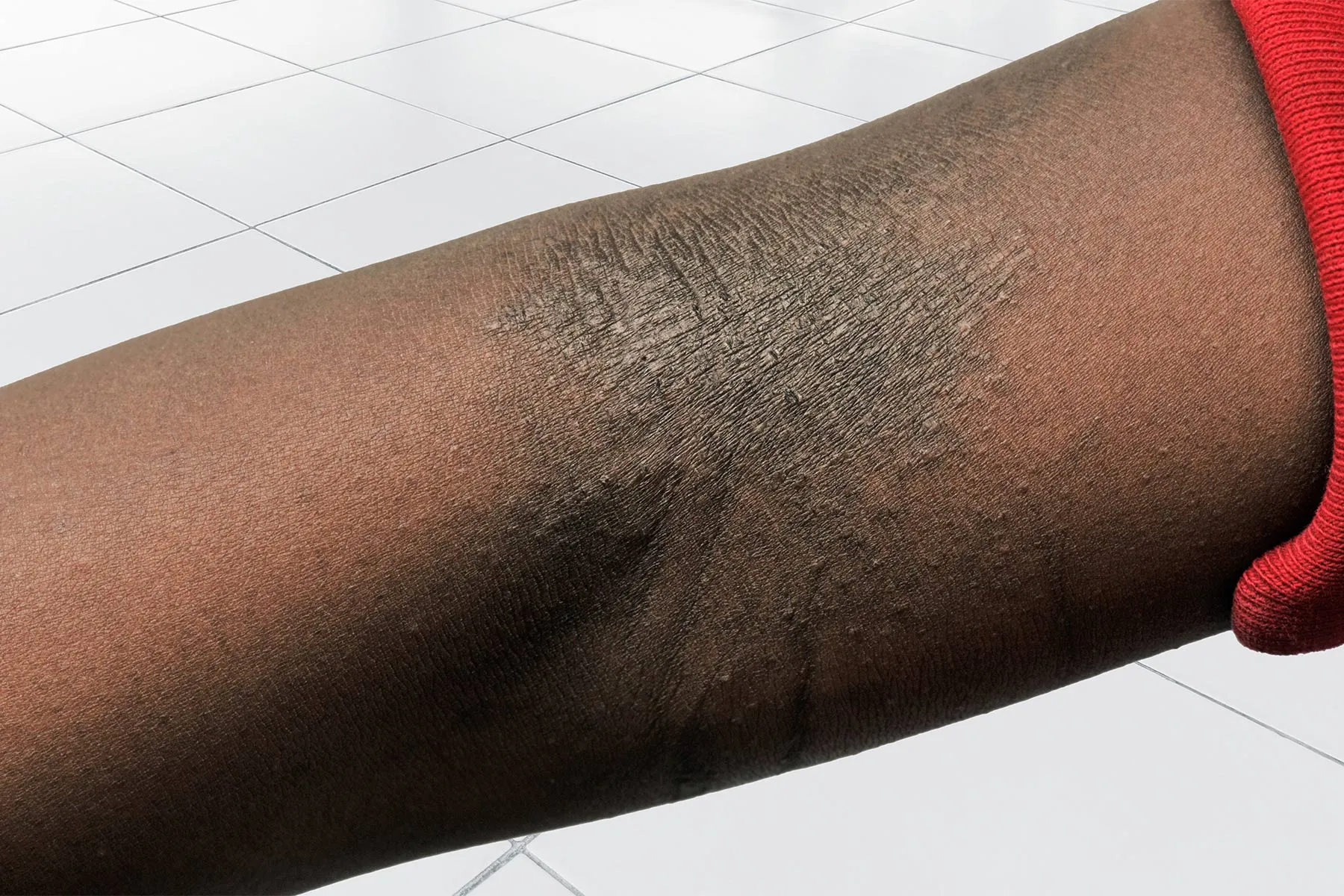The Trauma of Solitary: A Voice From the ‘Madhouse’
Solitary confinement, at least in Texas, is a place where prison administrators send inmates to "complete their mental decline―to rot, separated and alone from the rest of humanity," writes a Texas prisoner.

When I woke up in my Texas prison, I was expecting another eventful day.
I had only been confined to solitary confinement―which is called Restrictive Housing in this state―for two days; but I had already witnessed three suicide attempts, and the violent beating of an inmate by a prison guard response team for refusing to leave the shower.
Meanwhile, a severely mentally disturbed dude down the tier from me had not stopped yelling “Freeworld!” at the top of his lungs since my arrival.
I had been incarcerated within the Texas prison system for over 20 consecutive years. I knew that there was a solitary confinement sector of the prison where allegedly the “worst of the worst” inmates were held.
But I had no inklings that the place was an all-out psychiatric ward.
It was filled with inmates who needed treatment more than they needed isolation. Solitary confinement, at least in Texas, was a place that the prison administrators sent inmates to complete their mental decline―to rot, separated and alone from the rest of humanity.
I was placed here after a prison guard discovered a cellphone in a cell that I shared with another inmate. Despite practically being a role-model prisoner, being assigned to a cell where a cellphone is discovered rendered me a threat to the security of the penal institution.
So I was sent to the madhouse.
As I stood in my door brushing my teeth, I noticed the prison guard response team―an eight-member team dressed in full tactical gear―standing at the entry gate to our cellblock.
They all had full body shields erected in front of them as if they were preparing to bumrush someone, or be bumrushed. Initially, I thought that an inmate had broken free from their cell. But after closer evaluation, I noticed that a guy three cells down from me had overpowered a guard through the opening that’s a part of our steel doors. Guards use this opening to serve food, pass clothes and medication.
Extended out of the opening were this guy’s two large arms. In both of his hands were Niagara purified drinking water bottles filled with a thick brown-looking watery substance. The bottle tops had been modified with empty cartridges from the writing pens. The pen cartridges extended from the tip of each bottle like a drinking straw from a fountain drink.
I was witnessing a stand-off.
On one side was the response team standing about 20 feet away from the front of the cell On the other side was the inmate armed with two bottles of God knew what.
“I want my shit,” yelled the agitated inmate “I’m tired of y’all fucking me out my shit. I’m gon’ shit you mutha-fuckas down today.”
What shit the guard had robbed him for I would never find out. But I did conclude that the cocktail that he had in the bottles was a mixture of his own feces and urine. The more he spoke, the more familiar his voice sounded.
It was “Freeworld.”
He was due to be released back into free society in a couple of weeks, and he utilized his irritating shout of “Freeworld!” to remind everybody of his pending release.
But today he was in a stand-off with the Response Team and showing no signs of retreating. When the Response Team approached his cell, Freeworld began firing. Whenever he would empty one bottle he would grab another one from the inside of his cell. The Response Team tried to avoid the steady stream of feces that was coming their way like water being shot out of a super-power water gun, but had little success.
Shit was flying everywhere, literally. Freeworld had an arsenal of feces/urine cocktails.
Once his arsenal ran out, the Response Team rushed his cell and sprayed it with so much pepper spray that I had difficulties breathing three cells down. They entered into his cell and violently subdued him. Upon their exit, they closed his cell door and ordered him to stick his hands out of the opening so the guards could remove the restraints.
Freeworld complied and didn’t attempt to stop them from closing the opening. The Response Team left, leaving only a trail of shitty footprints.
No medical staff came to examine the physical or mental state of any of us, including Freeworld. The foul-smelling and disgusting feces/urine mixture that he had saturated our tier with remained untouched until the following day.
Freeworld would have a few more stand-offs with the Response Team like that in the following weeks. Then the prison system released him in his deranged state back into free society without any supervision.
Freeworld was required to complete his entire prison term and therefore required no supervision.
Who is Being Protected?
According to the Texas Department of Criminal Justice (TDCJ), the state’s prison agency, solitary confinement is used exclusively for security purposes, when someone’s life is in danger, for example, or if an inmate is a member of a known gang.
This concept was first erected by the Quaker tradition of introspection and quiet reflection at the Eastern State Penitentiary in Pennsylvania in the early 19th century. It became a fixture in American prisons and jail since its inception.
Inmates are forced to spend 23 hours or more every day alone in a cell about the size of a parking space. In Texas, they are not allowed TV or contact visits with their family. Also, there are no phone calls, no educational opportunities and religious services are limited to cell-side visits by chaplaincy staff.
Solitary confinement inmates are only allowed to leave their cells to travel to the shower or an enclosed recreation area. They must submit to humiliating strip searches prior to exiting their cells and submit to hand restraints.
In recent years criminal justice experts, prison administrators, media personalities, and elected officials have condemned solitary confinement, arguing it is inhumane and can cause serious, long-lasting harm.
Solitary, Texas-Style
Many prison systems throughout America have worked to limit or abolish the use of solitary confinement in their state. The state of Texas has refused to make any meaningful change.
Every single man on Texas Death Row is held in solitary confinement whether they violated a prison rule or not. Due to the fact that they have been condemned to death, TDCJ places them into solitary confinement without conducting any type of examination if these men would be a threat to the security of the prison.
Likewise, suspected or confirmed members of a prison gang are placed into solitary confinement, irrespective of whether they committed any infractions against the prison’s rule.
Also, psychologically impaired inmates who have little control over their mental state are placed into solitary confinement instead of being sent to a mental institution to receive treatment.
Although the TDCJ administration states that they don’t use solitary confinement as a measure of punishment, there are numerous inmates who have been sent to solitary confinement for something as simple as unwillingness to become a confidential informant.
On March 13, 2019, a violent inmate attacked guard in the unit’s building number seven. The Safe Prison supervisor traveled to the other portion of the unit and threaten to charge three inmates with the assault on guard if they didn’t agree to become his confidential informant. None of them were present in the building when the assault was committed, and thought that it was no way possible that the Safe Prison Supervisor could pin the assault on them.
Editor’s Note: Names of the inmates and guard have been omitted.
The assault had been captured on video surveillance, and the inmate had acted alone.
The Safe Prison supervisor charged all four inmates with the assault. In fact, there were over seven inmates charged, including an inmate who was present when the attack occurred and was charged because he did not help the guard.
They were all placed in solitary confinement and have remained there for the past two years. Unlike the progressive ideals of the Eastern State Penitentiary, the goal of TDCJ’s solitary confinement are punitive and utilitarian in nature.
Many states who had solitary confinement systems similar to Texas have lost costly lawsuits. In Ashker v. Governor of California, the courts ruled that indefinite confinement of alleged gang members was a human rights violation. That ruling resulted in the state of California having to reduce its solitary confinement population by 97 percent.
In Gumm v. Jacobs, the courts ruled that the state of Georgia could not hold prisoners in solitary confinement for longer than two years, and prisoners must be given educational opportunities during their stay in solitary confinement. Prisoners were issued prison tablets, that allow them to access educational programs, send and receive emails, and access other media. In Virginia, inmates are allowed to have TVs, music players and contact visits.
The United Nations limits solitary confinement to 15 days and only for serious violations in its Standards for the Minimum Treatment of Prisoners, also known as the “Mandela Rules.” In the U.S. Congress, a group of senators introduced legislation that limited the use of solitary confinement to 90 consecutive days for federal prisons in the Solitary Confinement Reform Act or SCRA.
A Threat to Public Safety
In 2013 a prisoner named Evan Ebel was released directly from long-term solitary confinement to the free society. Within hours he had tracked down Tom Clements, then executive director of the Colorado Department of Corrections and assassinated him.
“Solitary confinement is a barbaric and torturous practice that strips people of their dignity,” states a report titled, “Torture By Another Name,” published by the Texas Civil Rights Project.
Numerous studies over the course of the last two decades have concluded that prolonged isolation in prison is associated with the type of adverse mental health incidents I’ve experienced in the short time I have been confined to solitary.
From inmates trying to kill themselves on a daily basis, to inmates like Freeworld who saved and used his own feces to solve a conflict. It causes mild to severe mood disorders, increased blood pressure and self-harming behaviors.
In Texas, where there are more people locked in solitary confinement than 12 other states house in their entire prison system, inmates spend an average of five years in solitary, which costs taxpayers a whopping $46 million a year. Between 2015 and 2018, there were 17 successful suicides in TDCJ solitary confinement.
Many of these psychologically disturbed inmates are being released directly back into the general society. Like Ebel, they can only return to cause destruction and unnecessary death.
I often think about the community that Freeworld was allowed to return to. I know if the wrong person comes in contact with him, the result will not be good.
In this day where criminal justice reform is a high priority, the community has to demand more from those in charge of operating its prisons. These trusted officials have a moral obligation to return inmates back to society better, more holistic, empowered, and healthier.
This task cannot be accomplished with the continued use of solitary confinement.
“Like other states, Texas must transform its solitary confinement practices to end the violation of human and constitutional rights happening in its solitary confinement units,” states the Texas Civil Rights Project report.
“We recognize the need for brief separation from others in some rare and extreme circumstances, no one should ever be held in isolation for any period of time in the conditions that Texas currently has.”
I agree.
After first-hand experience in solitary confinement, it is clear that the Texas Department of Criminal Justice houses numerous inmates who are not a threat to the security or safety of the prison. These seriously mentally ill individuals should be housed at treatment facilities.
Maintaining the status quo is the most deplorable and psychologically crippling mechanism in all of the modern-day criminal justice practices.

Jeremy Busby
Texas, and any other state that still utilizes solitary confinement in such ways, owes it to the general public to adhere to its stated top goal: Public Safety.
Jeremy Busby is a writer and an activist who has been incarcerated in Texas for over 20 consecutive years. To read his earlier columns in The Crime Report, please click here. You can follow him at JoinJeremy (FB), JoinJeremy4Justice (IG) or write to him at Jeremy Busby #881193, James Allred Unit, 2101 FM 369N, Iowa Park, Texas, 76367.

 Landwebs
Landwebs 



















